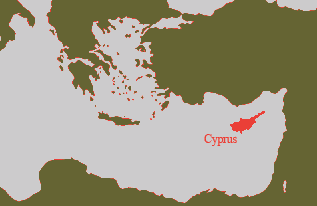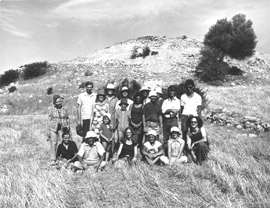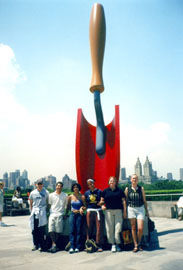Welcome to the Phlamoudhi Archaeological Project!
We invite you to explore this website and learn about the village of Phlamoudhi, Cyprus, and their place in the art, archaeology, and history of the Mediterranean world.
- Read about the exhibition, Views from Phlamoudhi, Cyprus in the Cyprus Museum, Nicosia for June 18-September 18, 2009.
- Read up on existing and upcoming publications and presentations about Phlamoudhi.
- See a listing of past events related to the Phlamoudhi Archaeological Project and its exhibitions under publications and in our archive.
- View the schedule for the symposium held in conjunction with the first exhibition from January 20-22, 2005 at Columbia University, papers from which are now published in Views from Phlamoudhi, Cyprus (Annual of the American Schools of Oriental Research 63, 2008). Also view a slide show of the original exhibit.
 |
The Mediterranean has always been a place of dynamic cultural and artistic interaction. With the advent of burgeoning sea trade in the second half of the second millennium BCE, or the Late Bronze Age, Cyprus became a vital and prominent place of interaction, bringing together people and ideas from all parts of the Mediterranean world. Cyprus continued throughout its history – in the Iron Age … the Roman period … the Middle Ages … and the modern day – to be a place of interconnections. The village of Phlamoudhi was a part of that vibrant world. The contributions of Phlamoudhi to the art and culture of the Mediterranean was made public for the first time in an exhibition that ran from January 18-March 19, 2005 in the Miriam and Ira D. Wallach Art Gallery in Schermerhorn Hall on the campus of Columbia University. This exhibit will reopen in the Cyprus Museum on June 18, 2009. It will feature the archaeology of Phlamoudhi in addition to an exhibition of photographs of the village and its residents taken by Ian J. Cohn in 1972.
 |
| 1970s team, Edith Porada at far left |
Phlamoudhi lies in the foothills of the Kyrenia mountain range on the north coast of Cyprus. In the early 1970s, Professor Edith Porada of Columbia University made exciting discoveries there dating to the Late Bronze Age (ca. 1650-1200 BC), Archaic, Classical, Hellenistic, Roman, and Medieval periods. Most prominent among them were a Late Bronze Age and Iron Age site on the hilltop of Vounari and a contemporary settlement on the hillside of Melissa. Vounari was published in part by Selma Al-Radi in 1983..
 |
| 2002 team |
Since 2000, the aim of the Phlamoudhi Archaeological Project, directed by Professor Joanna S. Smith, has been to publish and launch public exhibitions of the discoveries at Phlamoudhi. Please see the exhibition description and the other pages here for further details of the Phlamoudhi Archaeological Project’s work.
We would like to thank the following:
The Phlamoudhi Archaeological Project is grateful to the following, without whom our work would not have been possible: undergraduate and graduate student project participants from Columbia University, Hunter College, New York University, and other neighboring institutions as well as volunteers not formally enrolled in a degree program; members of the original Columbia University Expedition to Phlamoudhi; the Department of Art History and Archaeology at Columbia University; the Columbia University Center for Archaeology; the Miriam and Ira D. Wallach Art Gallery; Columbia University Art Properties; Columbia University Visual Media Center; the Columbia University Center for the Ancient Mediterranean, the Department of Classics at Columbia University; the Columbia University Center for Environmental Research and Conservation; the Columbia University Council Grants (Hettleman Fellowship); the Friends of Phlamoudhi; the Department of Antiquities of Cyprus and the Cyprus Museum; the Cyprus American Archaeological Research Institute; the Institute for Aegean Prehistory; the Shelby White – Leon Levy Program for Archaeological Publications; the Dr. M. Aylwin Cotton Foundation; the Anastasios G. Leventis Foundation; the Alexander S. Onassis Public Benefit Foundation; the Samuel H. Kress Foundation; the Joukowsky Family Foundation; the Metropolitan Museum of Art (Department of Greek and Roman Art); and the Pierpont Morgan Library (Collection of Seals and Tablets).

